Struggling to maintain product quality?
When requirements are scattered across documents, spreadsheets, and emails, your team can’t align. This miscommunication leads to costly rework and missed sprint deadlines.
It’s even worse when outdated tools lack traceability, making it impossible for you to see how a single change impacts the entire project.
This information chaos doesn’t just slow you down. It directly threatens your product’s integrity and puts your team’s valuable work at high risk of failure.
Speaking of ensuring quality and minimizing risk, my guide on HR compliance software offers essential insights.
But the right software stops this by creating a single source of truth that keeps every stakeholder perfectly aligned on all project requirements.
In this article, I’ll guide you through my picks for the best requirements management software to help you accelerate sprints and ensure quality from day one.
You’ll discover solutions that streamline real-time collaboration and provide the clear traceability you need to build the right product features consistently.
Let’s dive in.
Quick Summary:
| # | Software | Rating | Best For |
|---|---|---|---|
| 1 | Jama Software → | Multi-disciplinary teams | |
| 2 | ReqView → | Growing software companies | |
| 3 | Tricentis → | IT project managers | |
| 4 | Orcanos → | Medical device companies | |
| 5 | Intland Software → | Regulated industries |
1. Jama Software
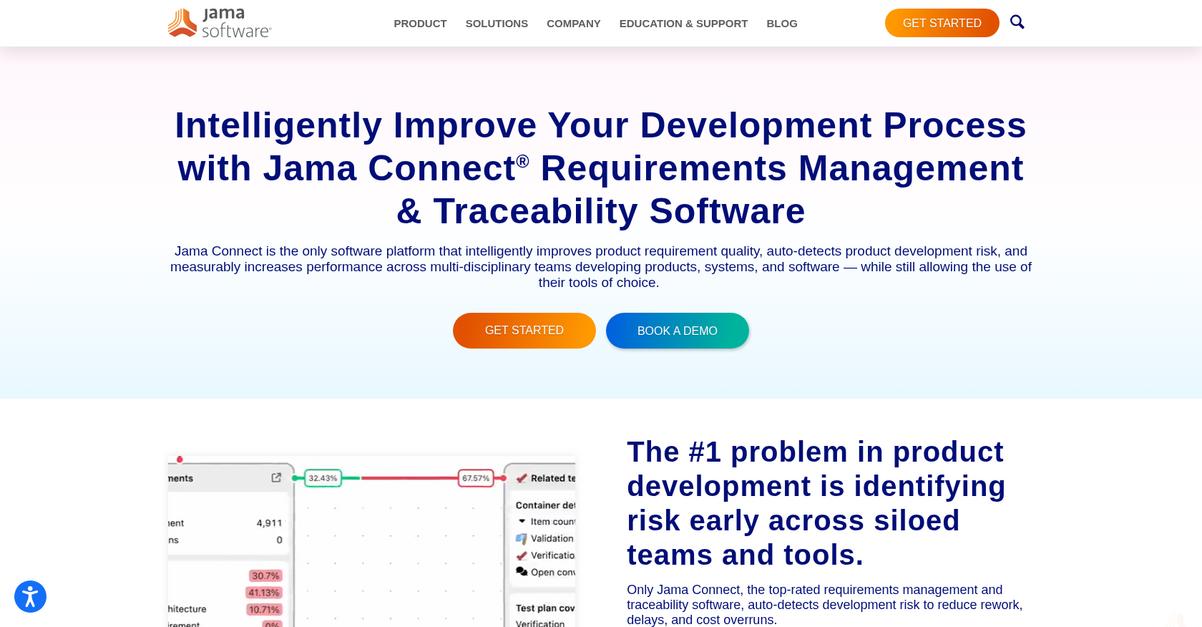
Are you struggling with product development risks?
Jama Connect is your solution, intelligently improving requirement quality and detecting development risks across multi-disciplinary teams.
This means you can identify poorly written requirements, missing items, or validation gaps in real-time, greatly reducing rework.
Discover better requirements management now.
Jama Connect intelligently improves your development process by auto-detecting development risk. This significantly reduces rework, delays, and cost overruns.
Additionally, it helps you understand user needs and craft clear requirements, improving efficiency and quality. For example, Jama Connect users reportedly cut rework by 50%.
Plus, its Trace Scores™ measure traceability to accelerate time to market, helping your teams identify defects two times faster and reduce test failures by nearly 3x. The result? Better performance and product quality.
Gain unmatched visibility and control.
Before diving deeper, you might find my analysis of blogger outreach software helpful for improving your brand’s reach.
Key features:
- Intelligent Requirement Improvement: Auto-detects poorly written, missing, or changed requirements, offering recommended improvements to enhance product quality.
- Real-time Risk Detection: Identifies development risks early across siloed teams and tools, reducing rework, delays, and cost overruns efficiently.
- Comprehensive Traceability & Compliance: Measures traceability with Trace Scores™ to accelerate time to market and streamlines compliance with industry standards.
Jama Software features, pricing, & alternatives →
Verdict: Jama Connect stands out as a best requirements management software, intelligently improving product requirement quality and auto-detecting development risk. Your team can achieve significant ROI with reported 100% reuse, 50% reduction in rework, and 75% faster audit preparation. It’s your single source of truth for product development.
2. ReqView
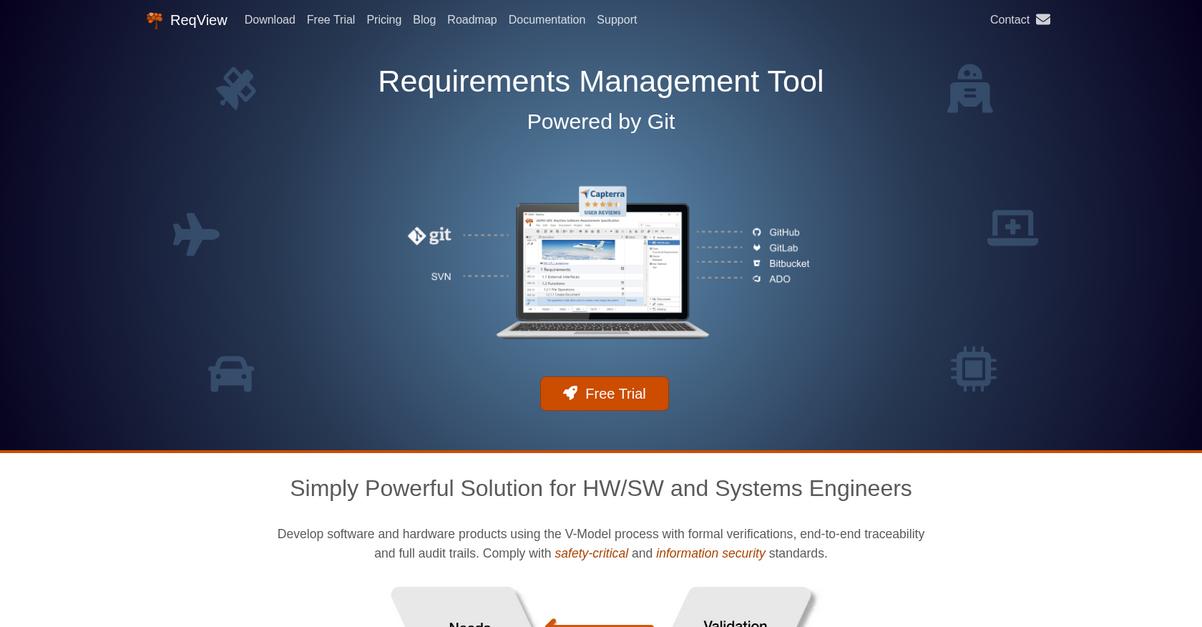
Struggling with complex requirements and compliance?
You can streamline your requirements engineering with ReqView, a solution designed for hardware, software, and systems engineers.
This tool helps your team get started quickly by importing existing documents and then elaborating requirements, risks, and tests in one place. Your projects stay on track with easy version control in Git or SVN.
Here’s how it helps.
ReqView streamlines your entire product development lifecycle, ensuring formal verifications, end-to-end traceability, and complete audit trails. You can easily capture requirements using templates based on the ISO/IEC/IEEE 29148:2018 standard or import from Word.
This allows you to describe structured requirements with formatted text, tables, and images, ensuring clarity. You can customize requirement attributes, link related items, and baseline requirements in Git, providing robust control over your project. Plus, you can analyze traceability to meet safety standards and generate comprehensive reports for MS Word, Excel, PDF, or HTML, making information sharing easy.
The result is improved compliance and significant time savings for your product development.
To ensure smooth data flow across your tech stack, check out my article on best application integration tools.
Key features:
- Requirements Capture & Management: Start projects fast with industry-standard templates, import from Word, and manage requirements, risks, and tests in intuitive tabular views.
- End-to-End Traceability: Understand and analyze upstream and downstream requirements, identify missing links, and ensure full coverage for safety and compliance standards.
- Integrated Version Control: Track all requirement changes directly in Git or SVN, allowing seamless collaboration and integration with your existing development workflows.
ReqView features, pricing, & alternatives →
Verdict: For growing software companies navigating complex projects, ReqView stands out as a strong contender for the best requirements management software. Its robust traceability, integrated version control, and comprehensive reporting capabilities directly address common pain points, delivering a powerful yet easy-to-adopt solution for compliance and quality.
3. Tricentis
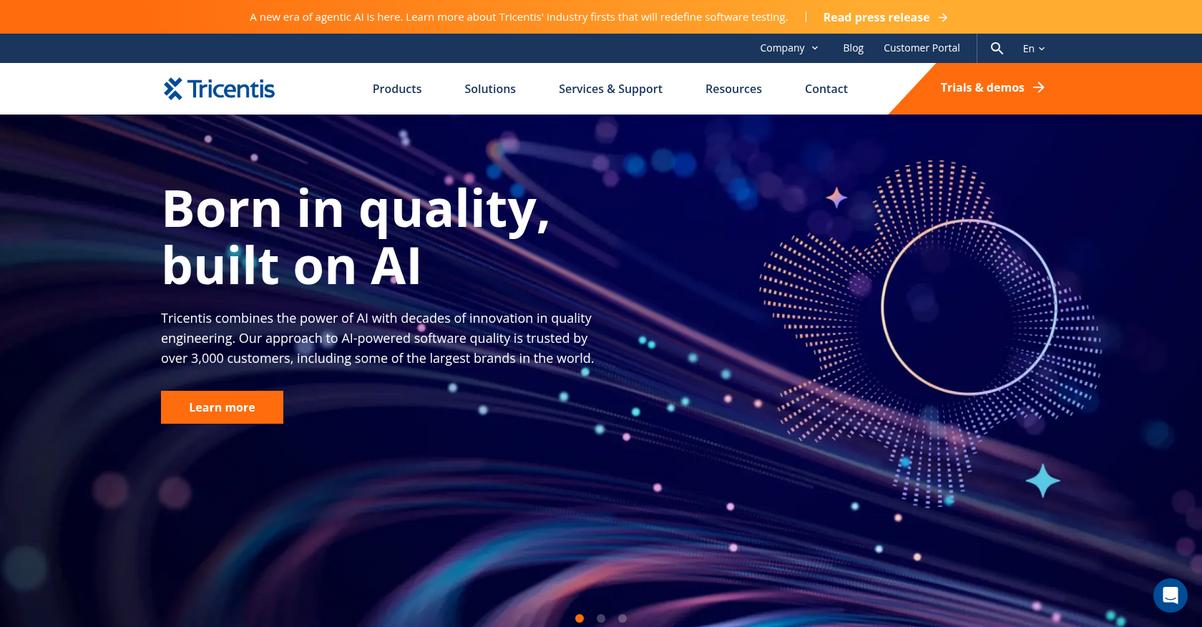
Struggling with outdated requirements management tools?
Tricentis offers an AI-powered software quality platform that can streamline your requirements tracking. This means you can achieve end-to-end results across test automation, test management, and quality intelligence.
You’ll find Tricentis serves as a central operating system for your quality engineering, providing complete traceability, governance, and visibility for every application and team. This ensures that your team can orchestrate automated testing and gain full-cycle visibility across the business.
This means confidence in your software quality.
Tricentis solves the common pain point of disjointed tools by offering an integrated platform that covers various aspects of software quality, including enterprise test automation, test management, and performance testing. This comprehensive approach helps you reduce errors, accelerate sprint alignment, and maintain consistent quality across projects.
You can streamline your workflows because Tricentis ensures traceability and governance while orchestrating automated testing, providing full-cycle traceability and visibility across the business. Additionally, Tricentis SeaLights blocks untested code from reaching production, executing only changed-based tests, which minimizes risk and time. Plus, their mobile testing capabilities offer model-based, codeless automation for rapid test creation and maintenance on physical and virtual devices.
The result is sustainable development practices.
To ensure overall business success, understanding performance data is key. My guide on best marketing analytics tools explores how to gain valuable insights.
Key features:
- AI-powered platform: Combines AI with quality engineering to deliver agentic AI capabilities for enterprise software quality, ensuring end-to-end results across various applications.
- Comprehensive test management: Provides a central operating system for quality engineering, offering complete traceability, governance, and visibility for all applications and stakeholders.
- Risk and cost reduction: Features like SeaLights prevent untested code from production and execute only necessary tests, reducing risk, time, and costs for your projects.
Tricentis features, pricing, & alternatives →
Verdict: Tricentis, trusted by over 3,000 customers, stands out as a leading contender for the best requirements management software due to its AI-powered platform that integrates test automation, test management, and quality intelligence. Its robust capabilities in traceability, governance, and risk reduction make it ideal for IT project managers seeking to improve quality at scale, as demonstrated by Wolters Kluwer accelerating test coverage across hundreds of applications.
4. Orcanos
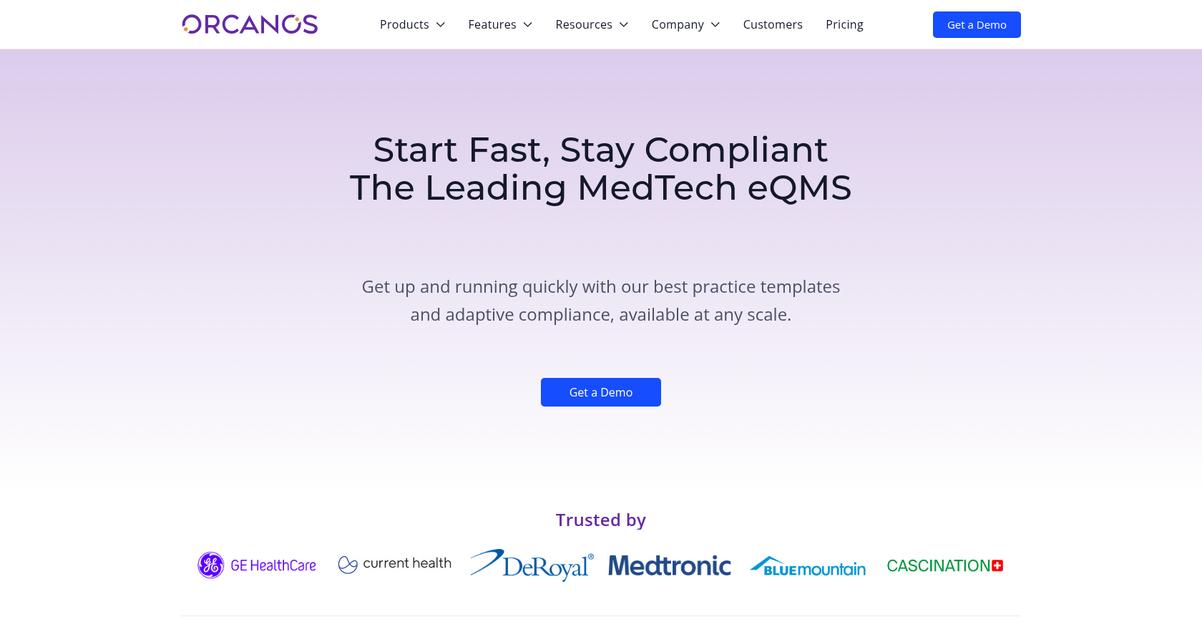
Struggling with fragmented requirements and compliance headaches?
Orcanos offers a complete ALM system integrating Application Lifecycle Management with regulated Design Control, which improves delivery time.
This means you can streamline communication between QA and R&D, overcoming common challenges with a lack of communication flow between your teams. This unified approach also saves costs and reduces frustration.
Here’s how Orcanos helps.
Orcanos integrates ALM and Quality Management System processes for [efficient compliance management], shortening time to market and meeting regulatory standards.
They offer efficient sign-offs and revision tracking, letting you automate compliance processes and reduce bottlenecks on document routing and sign-off. You can also leverage powerful customization tools with simple drag-and-drop templates.
Additionally, their platform supports electronic records and signatures, crucial for 21 CFR Part 11 compliance, and features an AI assistant, Ask Paul, to guide you toward efficiency. This helps ensure quality across projects.
The result is streamlined, compliant development.
While we’re discussing requirements management and quality, understanding [audit management software] is equally important for holistic business operations.
Key features:
- Integrated ALM & QMS: Centralizes design control with quality management, ensuring a single repository for all your project data and reducing data silos.
- Automated Document Control: Streamlines sign-offs and revision tracking, automating compliance processes and reducing bottlenecks for faster project progression.
- Risk Management & Compliance: Integrates risk management per ISO 14971 guidelines and supports 21 CFR Part 11 compliance for regulated industries.
Orcanos features, pricing, & alternatives →
Verdict: Orcanos is a strong contender for the best requirements management software, especially if you need to integrate your ALM and QMS processes while ensuring regulatory compliance like 21 CFR Part 11. Its powerful customization and traceability features make it ideal for medical device companies seeking to streamline development and quality.
5. Intland Software
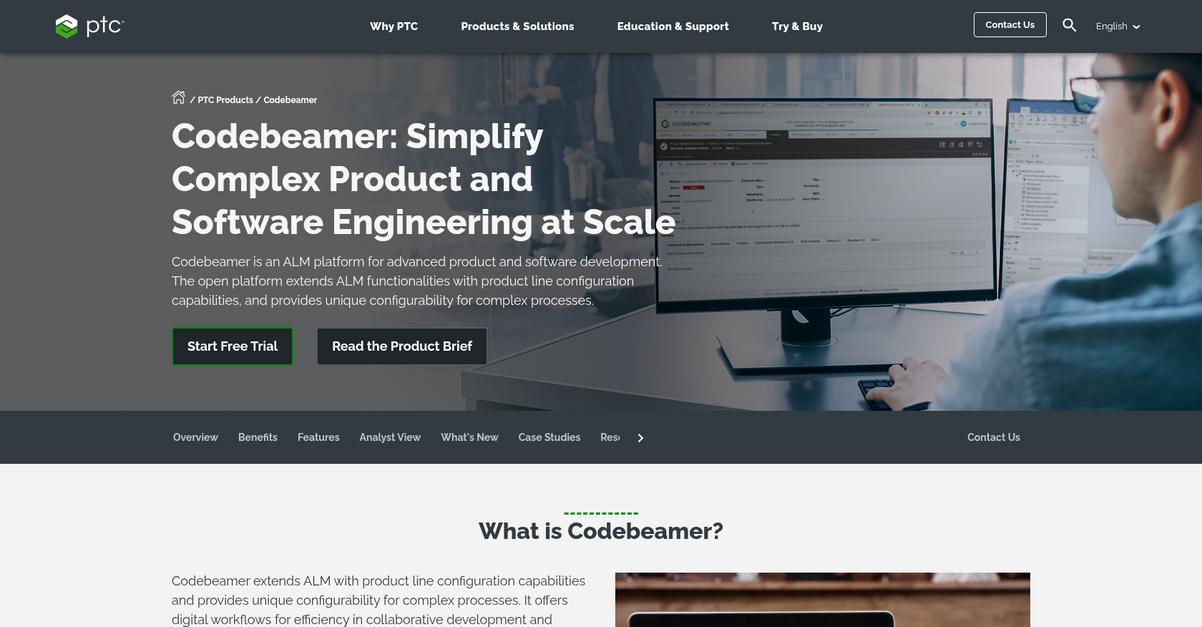
Struggling with sprint delays and quality issues?
Intland Software, Codebeamer, extends ALM with product line configuration capabilities and provides unique configurability for complex processes.
It offers digital workflows for efficiency in collaborative development and regulatory compliance support, helping you connect people, roles, and processes holistically.
So, how can Intland Software help you?
Codebeamer is an all-in-one software lifecycle management solution with robust requirements, risk, and test management capabilities. You can leverage modern, browser-based, and intuitive application lifecycle management features, including full end-to-end traceability. This means you can track requirements from inception through testing and release, ensuring nothing falls through the cracks. Additionally, Codebeamer integrates with existing tools and orchestrates CI/CD pipelines, simplifying your fragmented engineering environment and reducing manual work. It also provides out-of-the-box templates for regulatory compliance, which can accelerate your time to market.
This means reduced errors and faster sprints.
While we’re discussing software lifecycle management, understanding contract lifecycle management software is equally important for many businesses.
Key features:
- Complete software lifecycle management: Provides all-in-one requirements, risk, and test management capabilities, ensuring end-to-end visibility and control over your software development.
- Regulatory compliance templates: Offers predefined templates to meet industry standards like ISO 26262 and EU MDR, simplifying compliance and accelerating time to market.
- Full Agile capabilities: Supports planning, tracking, and managing Agile development with tools like Kanban, backlogs, and release systems, integrating with CI/CD pipelines.
Intland Software features, pricing, & alternatives →
Verdict: Intland Software’s Codebeamer stands out as the best Requirements Management Software for IT project managers focused on maintaining compliance, especially in regulated industries like automotive and medical devices. Its powerful traceability and integrated risk/test management reduce errors and streamline your development.
6. IBM
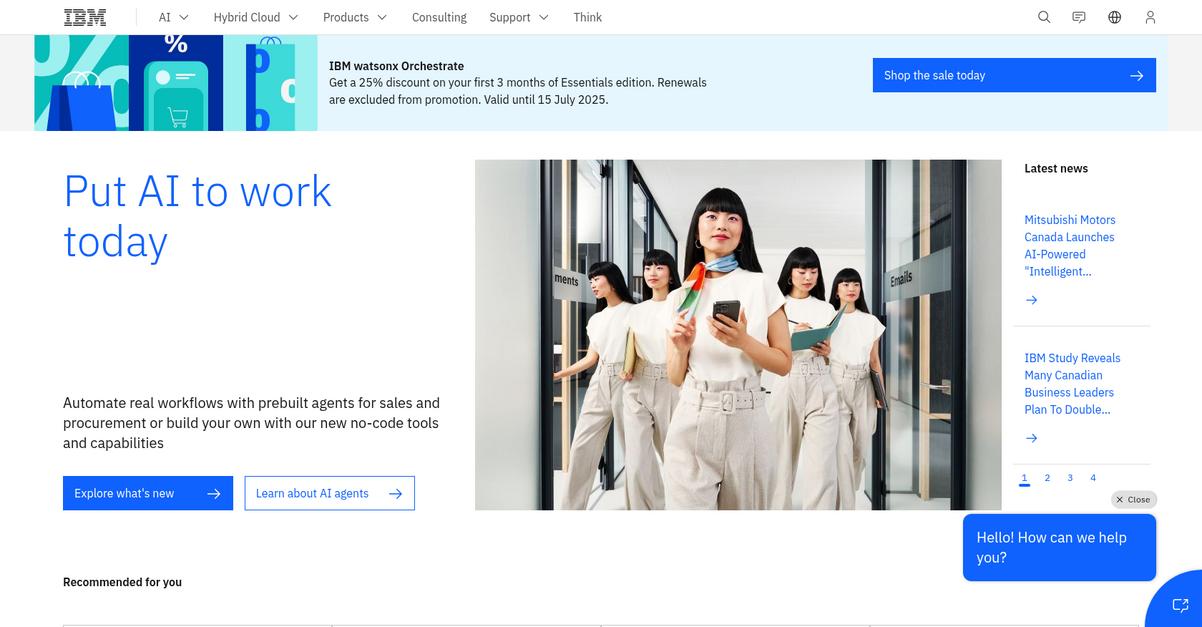
Struggling with outdated requirements management tools?
IBM offers AI-powered automation and no-code tools to transform your workflows and accelerate IT processes.
This means you can streamline requirements tracking and reduce development delays, ensuring your sprints stay on schedule.
Here’s how to achieve consistent quality.
IBM’s AI agents automate real workflows, integrating effortlessly into your existing business operations. This directly addresses the pain points of manual tracking and information overload.
For instance, you can monitor agentic AI performance with watsonx.governance, providing clear oversight and control over your AI projects. Additionally, the ability to build your own agents with no-code tools offers incredible flexibility to tailor solutions precisely to your unique needs, helping you adapt quickly during rapid scaling phases. Plus, their focus on governance helps you stay in control of your AI, ensuring security and compliance.
The result is reduced errors and faster sprint alignment.
Key features:
- AI-powered automation: Automate real workflows with prebuilt AI agents or build your own using no-code tools for enhanced productivity.
- Agentic AI governance: Monitor and manage the performance and lifecycle of your AI agents with watsonx.governance for secure operations.
- Seamless integration: Effortlessly integrate AI agents into your existing business operations to support data-driven decisions and increase productivity.
IBM features, pricing, & alternatives →
Verdict: IBM positions itself as a strong contender for the best requirements management software, particularly for IT project managers seeking to automate workflows and ensure quality. Its focus on AI-powered automation, governance, and no-code tools addresses key pain points like traceability and scalability, providing a clear path to streamlined requirements tracking and faster sprint alignment.
7. Visure Solutions

Are project delays impacting your sprints?
Visure Solutions offers a Requirements ALM Platform designed to manage your entire requirements lifecycle, from gathering to reporting, ensuring alignment across your project. This means you can handle requirements history, versioning, and element tracking with ease, letting you focus on progress.
You can streamline your processes and avoid the headaches of disjointed tools. You’ll simplify compliance audits and reduce overall project risk.
Here’s a deeper dive into the solution.
Visure Solutions brings together a powerful suite of tools to improve your development speed and quality. This includes features for risk management, test management, and traceability, which are crucial for maintaining consistent quality across projects and eliminating manual tracing.
You can gain end-to-end traceability, generating comprehensive matrices and impact analyses from requirements to tests, defects, risks, user stories, and even source code, all in one centralized platform. Additionally, it streamlines your change management process, providing real-time data on modifications and documented versions, and even offers an AI-powered integration for enhanced efficiency. Plus, Visure supports automatic capture of elements from MS Word, MS Excel, and ReqIF, ensuring smooth data import and round-trip capabilities.
This helps you maintain flexibility for future growth.
While we’re discussing strategic business insights, you might also find my guide on venture capital management software helpful for investment oversight.
Key features:
- Requirements ALM Platform: Centralized management of the entire requirements lifecycle, including history, versioning, tracking, and change management.
- End-to-End Traceability: Generate comprehensive traceability matrices from requirements to tests, defects, risks, user stories, and source code for clear oversight.
- Risk & Test Management: Mitigate risks, simplify test processes, and reuse validated requirements to ensure project quality and compliance.
Visure Solutions features, pricing, & alternatives →
Verdict: If you’re seeking the best requirements management software that tackles compliance, traceability, and accelerated timelines, Visure Solutions is a strong contender. Its AI-powered platform ensures quality, reduces rework, and eliminates manual effort, helping your organization achieve a full ROI within the first year, as reported by customers.
## Conclusion
Struggling to keep sprints on track?
Choosing the wrong tool makes it worse. It leads to information chaos, wasted resources, and a frustrating cycle of missed deadlines and costly rework.
The drive for these tools is undeniable. Companies adopt them to **reduce errors and improve traceability**, especially in industries with strict compliance requirements. It's about building quality in from day one.
So, here's my top recommendation.
From my analysis, Jama Software is the clear winner. It intelligently detects development risks and improves requirement quality before they become major problems.
With users reporting a 50% reduction in rework, the impact is undeniable. The best requirements management software like Jama Connect ensures you build the right product, faster.
For additional insights, if you're exploring [venue management software](https://nerdisa.com/best-venue-management-software/) options, my analysis provides valuable perspectives.
I highly recommend you [start a free trial of Jama Software](https://www.jamasoftware.com/platform/jama-connect/trial/). See for yourself how it can eliminate rework and accelerate your sprints.
Your team will deliver with confidence.






